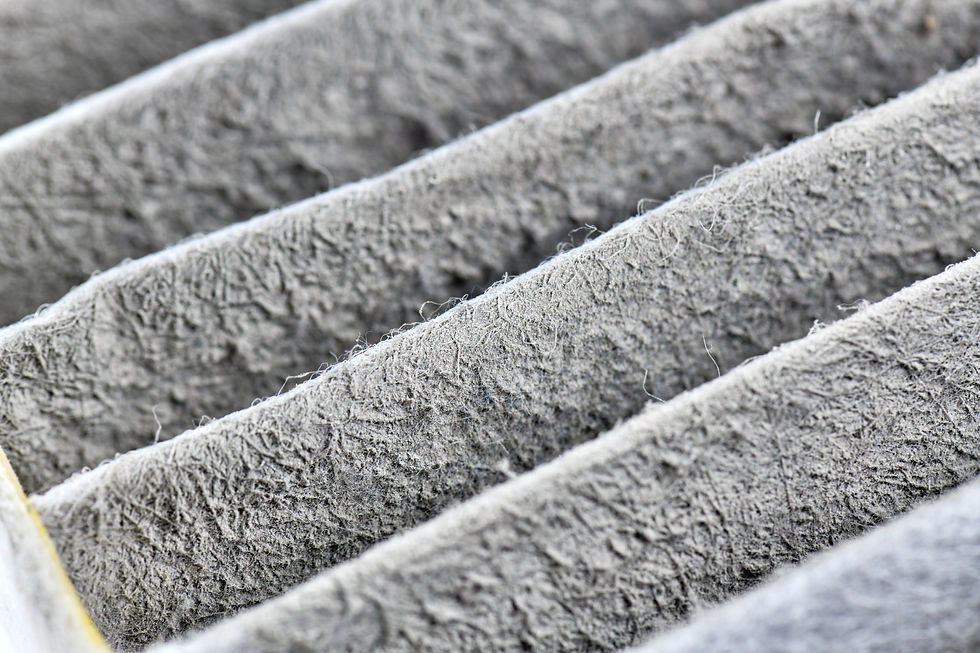The Impact of Wildfires on Indoor Air Quality (IAQ): What You Need to Know
- Jennifer Crowley
- Jul 28, 2023
- 3 min read
Updated: Jul 9, 2024

For the most up-to-date information, including which fires are out of control, visit Alberta’s Wildfire Status Dashboard.
Wildfires are an ever-present threat in many parts of the world, and they have become increasingly frequent and severe in recent years. While the immediate impact of wildfires is often devastating, with homes and communities destroyed and lives lost, the longer-term effects on the environment and public health can also be significant.
One such impact is the effect on indoor air quality, which can have severe consequences for the health of individuals and families. In this blog, we will explore the impact of wildfires on indoor air quality and discuss what you need to know to protect yourself from the harmful effects of wildfire smoke.
What is Wildfire Smoke and What is the Impact of Wildfires on Your Indoor Air Quality?
Wildfire smoke is a complex mixture of gases, particles, and water vapour that contains:
Ozone
Sulphur Dioxide
Nitrogen Dioxide
Carbon Monoxide
Volatile Organic Compounds (VOCs)
Fine Particulate Matter (PM2.5)
These pollutants can harm your health, with PM2.5 posing the most significant risk. The larger or “coarse” particles in smoke irritate the eyes, nose and throat but generally don’t reach the lungs. However, the “finer” particles, a fraction of a human hair’s diameter, can wreak havoc. These tiny particles can be inhaled deep into the lungs and eventually make it into the bloodstream, making healthy people sick and sick people sicker.
There is no evidence of a safe level of exposure for most of these pollutants. This means that smoke can impact your health even at very low levels. As smoke levels increase, your health risks increase. Air quality may be decreased even if you can’t see or smell smoke.
For people in close proximity to a wildfire, there’s a danger from breathing gaseous chemicals the fire emits. These include carbon monoxide, methane, acetic acid and formaldehyde.
Symptoms of Wildfire Smoke Exposure
The more common symptoms of smoke exposure include:
Headaches
A Mild Cough
A Runny Nose
Production of Phlegm
Eye, Nose and Throat Irritation
The symptoms typically associated with smoke exposure are primarily due to the irritation of the mucous membranes and respiratory tract by the fine particles contained in the smoke. Furthermore, toxic gases found in smoke, such as formaldehyde and acrolein, can exacerbate respiratory distress. It is important to note that even low levels of exposure to carbon monoxide can lead to chest pain and irregular heartbeat, especially for those with pre-existing heart conditions.
More serious health concerns can include:
Dizziness
Chest Pains
Severe Cough
Shortness of Breath
Wheezing (including asthma attacks)
Heart Palpitations (irregular heartbeat)
Who is most at risk?
Some people are at a higher risk of health problems when exposed to wildfire smoke, including:
Seniors: the elderly are more likely to have pre-existing heart or lung conditions; they are more susceptible to the harmful effects of wildfire smoke.
Pregnant women
Infants and young children: exposure to smoke is especially hazardous for children with asthma and may cause more frequent or severe asthma attacks. Children, in general, may experience shortness of breath, coughing and wheezing when exposed to smoky air.
People who work outdoors
People involved in strenuous outdoor exercise
People with existing chronic health conditions: individuals with heart disease and chronic lung diseases like asthma and emphysema; studies have linked high levels of particulate matter with decreased lung function, worsening asthma symptoms, irregular heartbeat, heart attacks and even premature death.
How to reduce your exposure to wildfire smoke?
The best way to protect your health is to reduce your exposure to wildfire smoke indoors. This can include doing the following:
Keep windows and doors closed as long as the temperature is comfortable.
Use recirculation settings on your HVAC system to prevent smoke from entering your home.
Use a clean, good-quality air filter in your HVAC system.
Use an air purifier with HEPA filtration to remove smoke from your home.





















